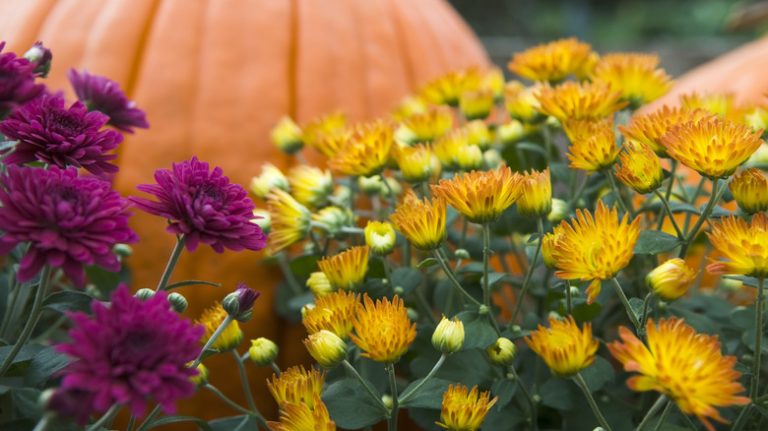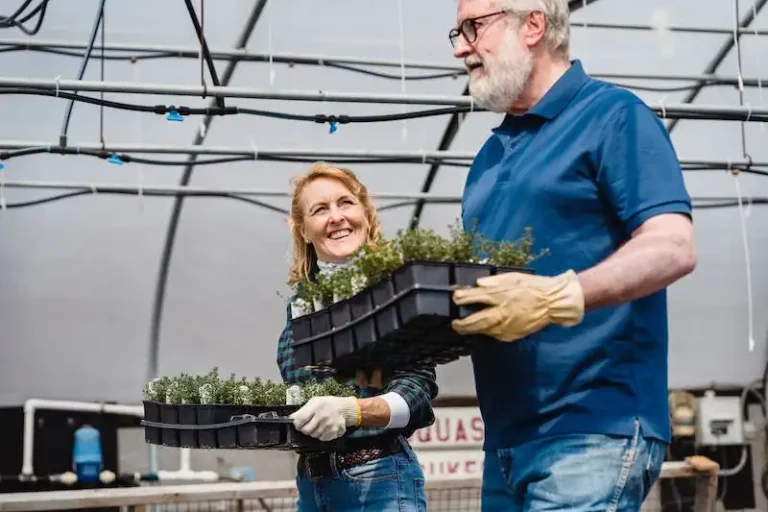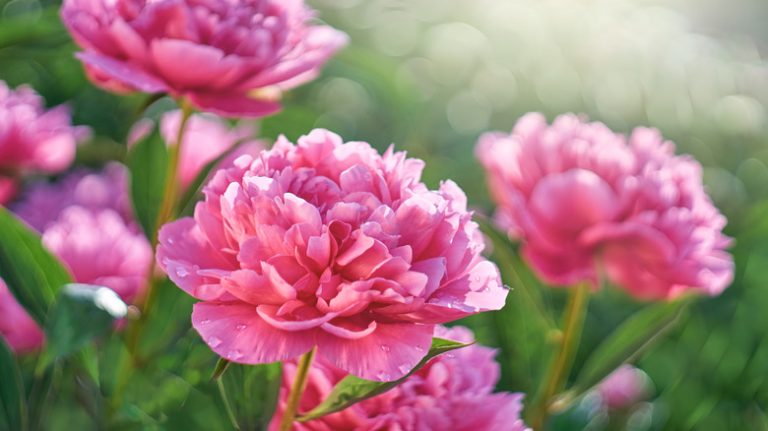When it comes to maintaining a beautiful garden, deadheading is one of the essential tasks. Deadheading involves removing the spent flower heads to encourage new blooms and prolong the flowering season. It is particularly important for perennials like daisies, as it helps them to produce more vigorous growth and attract pollinators, such as bees and butterflies.
Deadheading daisies, like the popular Becky daisy, is a simple and effective way to ensure that your plants stay tidy and continue to produce an abundance of lovely flowers. The process involves cutting off the flower heads once they have finished blooming. This prevents the daisy from going to seed and redirects its energy to the root system and the clump above the ground, where it will produce even more blooms.
So, how do you go about deadheading daisies? Here is a step-by-step guide to help you learn the proper technique:
- Start by finding the spent flower heads. They will be easy to identify as they will be wilted and their petals may have started to fall off.
- Using a pair of clean and sharp gardening shears or scissors, cut the flower stem just above a set of leaves or a new bud. Make sure to make a clean cut at a 45-degree angle to prevent any damage to the plant.
- If your daisies are of the spreading type, you may also want to deadhead some of the spent flowers that are below the main clump. This will help to keep the daisy from spreading too much and will encourage more vigorous growth.
- Repeat this process throughout the blooming season, whenever you see spent flower heads. Deadheading regularly will help to prolong the blooming period and keep your daisies looking their best.
Deadheading daisies is a simple yet effective maintenance task that can make a big difference in the appearance and longevity of your plants. By investing a little time into deadheading, you can enjoy healthier and more beautiful daisies in your garden.
In summary, deadheading daisies is a crucial step for maintaining healthy and vibrant plants. Regular deadheading encourages new blooms, prevents the daisies from going to seed, and redirects their energy to the root system. By following the step-by-step guide and using the proper tools, you can keep your daisies looking their best throughout the growing season.
How to Deadhead Shasta Daisies
Deadheading your Shasta daisies is an essential part of their maintenance to promote better blooms. This process involves removing the spent flowers to encourage new growth and prolong the flowering period. Deadheading also helps maintain the overall health and appearance of your favorite flowers.
When it comes to deadheading Shasta daisies, it’s important to know where and when to do it. The best time to deadhead is when the flowers start to fade or wilt, usually in late spring or early summer. You can easily identify the right spot for deadheading by looking for the spent blooms above the fresh-looking foliage.
To deadhead your Shasta daisies, follow these step-by-step instructions:
- Start by preparing your tools. You’ll need a pair of gloves and a sharp pair of pruners or gardening shears.
- Identify the spent blossoms and locate the point where the stem meets the flower head.
- Hold the stem of the spent flower head and follow it down towards the base of the plant.
- Once you reach a set of young leaves or a set of healthy buds, make a clean cut just above them. Be careful not to damage the surrounding foliage or any emerging growth.
- If your Shasta daisies have already developed seeds, you can also deadhead by gently pulling the spent flowers off by hand. This helps prevent the seeds from spreading and promotes better growth in the plant.
Deadheading your Shasta daisies will not only keep them looking tidier, but it will also allow them to redirect their energy towards new blooms. Regular deadheading will encourage a more vigorous and healthy plant.
Remember to repeat this process frequently throughout the flowering season to ensure continuous blooming. If you have any questions or concerns, don’t hesitate to reach out to a gardening expert or refer to a plant hardiness zone guide for more specific information.
Overall, deadheading Shasta daisies is a simple and important task to maintain the health and beauty of your plants. By following these steps, you can keep your Shasta daisies looking fresh and vibrant, year after year.
Introduction
Deadheading is an essential practice for any gardening enthusiast. Whether you have a daisy plant in your garden or you’re planning to grow one soon, understanding how to deadhead daisies can greatly improve your blooms. By removing spent flowers, you encourage your daisy plant to produce more fresh-looking blooms throughout the growing season. Deadheading is one of the easiest and most effective ways to promote the health and beauty of your daisies.
In this step-by-step guide, we will discuss why deadheading is important, the benefits it provides, and the guidelines to follow for deadheading your daisy plants. Deadheading not only tidies up the appearance of your garden but also encourages the growth of new blooms, making your daisies look better and healthier.
Before we dive into the specifics of deadheading, it’s important to understand what daisies are. Daisies are perennial plants that belong to the Asteraceae family. These plants are known for their cheerful white or colorful flowers, which have a button-like appearance. Daisies are popular among gardeners because of their ease of maintenance and their ability to grow in various seasons.
Many people often wonder why deadheading is necessary. The answer lies in the nature of daisy plants themselves. When a daisy flower begins to wilt and fade, it naturally sets seed. By removing the faded flowers before they have a chance to develop into seeds, you redirect the plant’s energy towards producing more blooms. This process contributes to the overall health and longevity of the daisy plant. Additionally, removing the faded flowers also prevents the plant from self-seeding and potentially creating unwanted growth in your garden.
What Is Deadhead
Deadheading refers to the process of removing spent or faded flowers from plants. This practice is mostly done with annuals and some perennials to encourage continuous blooming and maintain a tidy appearance in the garden. If you don’t deadhead, the flowers on your plants will begin to fade and even die off, leaving behind wilted and unsightly blooms.
Deadheading helps to redirect the plant’s energy from seed production to new flower development. It also prevents self-seeding, especially in perennials, which can quickly turn into young plants that overcrowd the garden. By removing the spent flowers, you allow your plants to focus on producing fresh-looking blooms instead of putting energy into seed production.
When deadheading, it is important to use the right tools and techniques to avoid damaging the plant. One common method is to pinch off the dead flowers with your fingers or use pruning shears or snips. If you choose to use tools, make sure they are clean and sharp to make clean cuts.
Deadheading can be done throughout the blooming season, but it is most effective when done early and regularly. By deadheading early, you can encourage a repeat flush of blooms later in the season. Additionally, deadheading helps to prevent diseases by removing the infected or decaying parts of the plant.
Deadheading is a simple yet effective practice that can have many benefits for your garden. It not only keeps your plants looking neat and tidy but also prolongs their blooming period and promotes their overall health. So, if you want to enjoy lovely daisies and other flowering plants year after year, be sure to include deadheading in your regular gardening routine.
| Benefits of Deadheading |
|---|
| Encourages continuous blooming |
| Prevents self-seeding in perennials, especially daisies |
| Promotes plant health by removing infected or decaying parts |
| Keeps the garden looking tidy and well-maintained |
| Prolongs the blooming period of flowers |
| Allows plants to redirect energy towards new flower development |
| Encourages repeat flushes of blooms |
When to Do Deadhead
Deadheading daisies is an important task to improve their overall growth and flowering. But when should you do it? The timing of deadheading daisies depends on the goal you have in mind.
If your goal is to maintain the overall appearance of the daisies and encourage repeat blooming, you can start deadheading as soon as the flowers start to fade. This will prevent the daisies from going to seed and redirect the plant’s energy towards new growth and blooming.
On the other hand, if your main goal is to gather seeds from your daisies, you should wait until the flowers have dried and turned brown. At this point, the seeds will be mature and ready for gathering. Simply cut the stems with the dried flowers and collect the seeds for future planting.
For gardeners who prefer to leave some daisies for display or enjoy the dried flower arrangements, it’s best to wait until most of the flowers on the plant have faded. This way, you can have a beautiful display of both blooming and dried daisies in your garden.
Throughout the blooming season, you can deadhead daisies on an ongoing basis. This means that after each flower has bloomed, you can remove the dried petals by gently pulling them off at the base. This will not only help the plant look neater, but also stimulate new growth and ensure a continuous flush of blooms.
In colder zones where daisies are annuals, deadheading can also help determine when to replant them. If you notice that the daisies are not flowering as abundantly as before, it may be a sign that it’s time to pull them up and replant younger daisies to ensure better blooms next year.
When it comes to deadheading, Becky from Gardenerscott encourages gardeners to follow their own preference and experiment with different timing. As long as you stay observant and adapt to your daisies’ needs, you’ll have a well-drained spot in your garden full of beautiful and thriving daisies.
Why Do the Shasta Daisies Need Deadhead
The Shasta Daisy, or Leucanthemum x superbum, is a popular perennial flower that can grow up to 3 feet tall and produces many beautiful blooms. However, to keep this plant in optimal health and ensure its continuous growth and blooming, gardeners often need to deadhead the daisies.
Deadheading is the process of removing the spent or faded flowers from a plant. In the case of Shasta Daisies, deadheading helps to promote new growth and encourages the plant to produce more blooms throughout the season.
When a Shasta Daisy is allowed to go to seed, it diverts energy and resources away from producing new blooms and instead focuses on seed production. This means that the plant will stop blooming after a while and may become less vigorous over time.
By deadheading the Shasta Daisies, gardeners can prevent the plant from self-seeding and redirect its energy back into producing more flowers. Deadheading also helps to maintain the plant’s appearance, as the dried or wilted flowers can make the plant look less fresh-looking or attractive.
Deadheading Shasta Daisies is a relatively simple process. All you need is a pair of sharp gardening shears or pruners. After the initial spring flush of blooms, you can cut the faded flowers down to the base of the stem. This will promote new growth and encourage the plant to produce another flush of blooms later in the season.
Additionally, deadheading can help to prevent the formation of seed heads and divisions in the plant. Some gardeners prefer to collect the seeds from their Shasta Daisies for future planting, but if you don’t want the plant to self-seed, deadheading is necessary.
Overall, deadheading the Shasta Daisies is an important part of their care. It keeps the plant looking fresh and encourages it to produce more blooms throughout the growing season. So don’t forget to deadhead your Shasta Daisies regularly to enjoy a longer and better blooming period!


